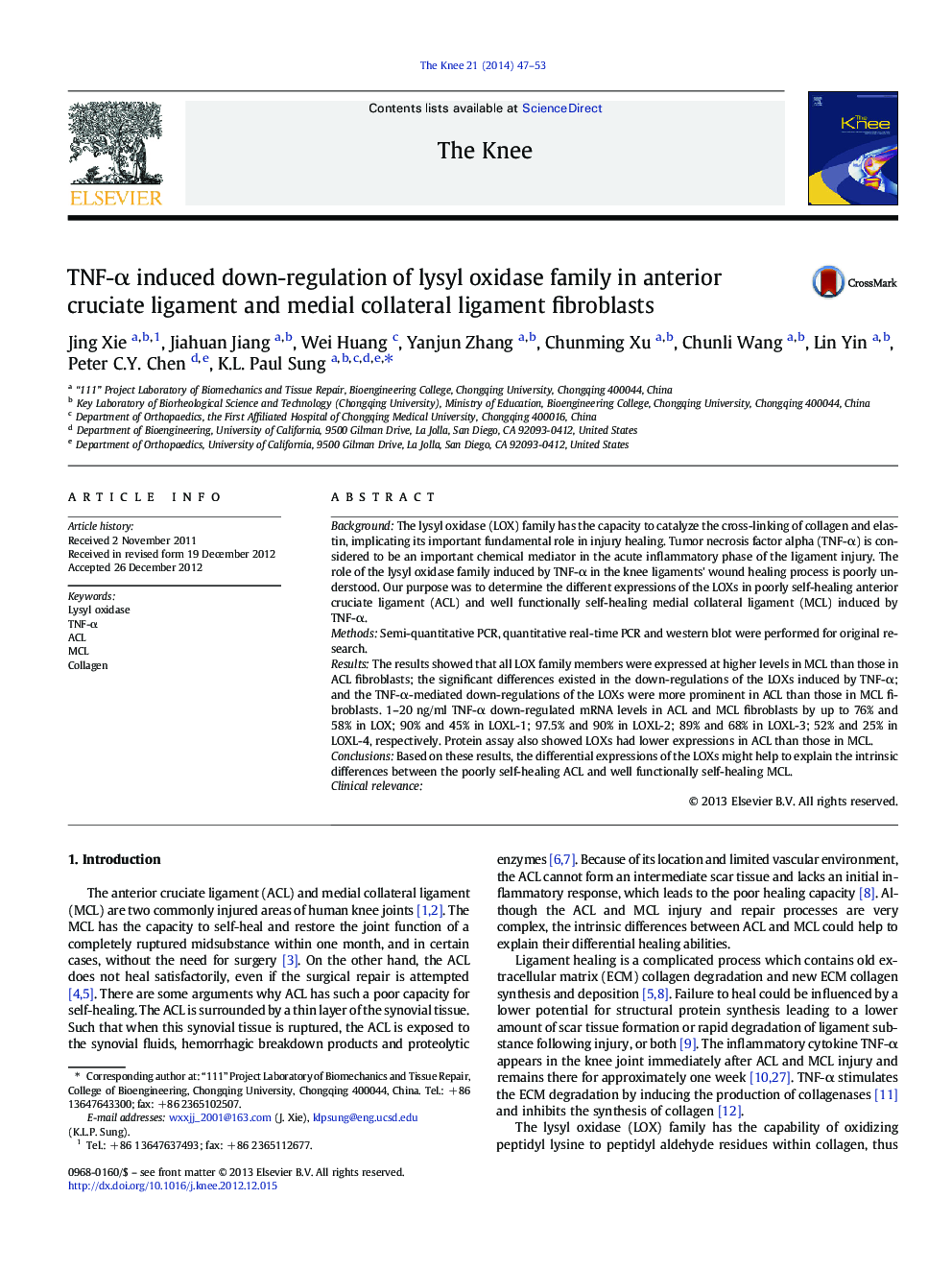| Article ID | Journal | Published Year | Pages | File Type |
|---|---|---|---|---|
| 6211212 | The Knee | 2014 | 7 Pages |
BackgroundThe lysyl oxidase (LOX) family has the capacity to catalyze the cross-linking of collagen and elastin, implicating its important fundamental role in injury healing. Tumor necrosis factor alpha (TNF-α) is considered to be an important chemical mediator in the acute inflammatory phase of the ligament injury. The role of the lysyl oxidase family induced by TNF-α in the knee ligaments' wound healing process is poorly understood. Our purpose was to determine the different expressions of the LOXs in poorly self-healing anterior cruciate ligament (ACL) and well functionally self-healing medial collateral ligament (MCL) induced by TNF-α.MethodsSemi-quantitative PCR, quantitative real-time PCR and western blot were performed for original research.ResultsThe results showed that all LOX family members were expressed at higher levels in MCL than those in ACL fibroblasts; the significant differences existed in the down-regulations of the LOXs induced by TNF-α; and the TNF-α-mediated down-regulations of the LOXs were more prominent in ACL than those in MCL fibroblasts. 1-20 ng/ml TNF-α down-regulated mRNA levels in ACL and MCL fibroblasts by up to 76% and 58% in LOX; 90% and 45% in LOXL-1; 97.5% and 90% in LOXL-2; 89% and 68% in LOXL-3; 52% and 25% in LOXL-4, respectively. Protein assay also showed LOXs had lower expressions in ACL than those in MCL.ConclusionsBased on these results, the differential expressions of the LOXs might help to explain the intrinsic differences between the poorly self-healing ACL and well functionally self-healing MCL.Clinical relevance.
